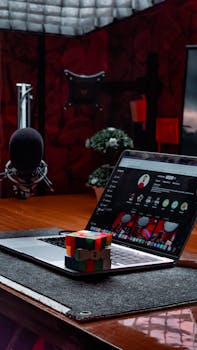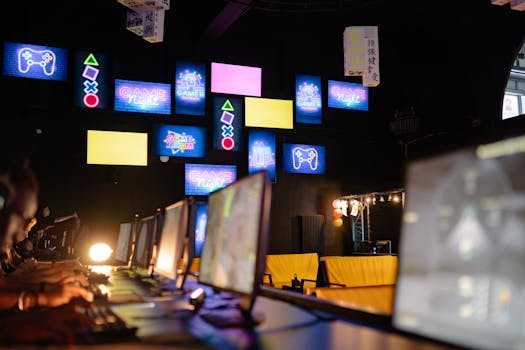Creating gaming materials is not only a rewarding activity, but it also allows for greater engagement in various gaming experiences. From board games to tabletop RPGs, the options are endless. With creativity and planning, anyone can design compelling and enjoyable gaming materials.
The process typically involves understanding the game mechanics, narrative elements, and visual aesthetics. Each component contributes to the gameplay experience, making it essential for creators to pay attention to detail. Additionally, fostering collaboration with fellow gamers can enhance the quality of the materials produced.
Whether you’re crafting game cards, character sheets, or entire game systems, having a clear approach will streamline the creation process. This guide offers insights into conceptualizing and producing effective gaming materials.
Understanding the Basics of Gaming Materials
Before diving into creation, understanding what constitutes good gaming materials is critical. These include rules, components, visuals, and narrative aspects. Each element plays a vital role in the overall user experience.
First, clarify the purpose of your gaming materials. Are they designed for fun, thematic storytelling, or competition? Depending on your audience, tailor the content to fit their preferences. Understanding these factors significantly improves material effectiveness.
Second, consider the game type you’re working on. Each genre and format has unique characteristics that dictate the design and structure of the materials. Identify those traits early in the planning process.
Finally, think about the visual appeal. Aesthetically pleasing designs attract players and enhance their engagement level. Utilize colors, shapes, and layouts that complement your game’s theme and mechanics.
In summary, grasping these foundational elements will set a solid groundwork for creating successful gaming materials.
Planning Your Gaming Materials
Planning is essential for creating coherent and functional gaming materials. Start by gathering inspiration from existing games, noting what you admire or want to improve. This focus helps narrow down your design goals.
Next, sketch a layout of your materials. Visualize how components will interact with one another during gameplay. This visualization assists in identifying potential issues calmly before actual production begins.
Furthermore, consider collaborative feedback from fellow gamers. Sharing ideas can spark creativity and lead to innovative solutions. Discuss your plans in a gaming community to heighten engagement.
Afterward, list the materials and tools you’ll need for production. This includes physical components like card stock or digital software for design. A well-prepared resource list saves time later.
Lastly, outline a timeline for each stage of production. This organized approach keeps you focused and helps manage any unexpected challenges along the way.
Choosing the Right Materials
The materials you select will directly influence the quality and durability of your gaming products. Consider options carefully, weighing pros and cons. Popular materials include card stock, plastic, wood, or digital assets.
For card or board games, heavy-duty card stock offers durability and a quality feel. Additionally, glossy finishes can enhance colors and imagery, making your materials visually appealing. Research printing services to find reputable options.
When crafting items like miniatures, compare plastic and resin options. Each material has different weight, texture, and paint adherence, which affects the final product. Experiment with both to see which aligns with your vision.
Digital gaming materials may require software that fits various design needs. Look at user-friendly platforms that encourage creativity. Tools like Adobe Creative Suite or free alternatives like GIMP offer robust features for your projects.
Ultimately, choose materials that align with your game’s audience and theme. Quality counts, and using appropriate materials elevates the overall gaming experience.
Designing Aesthetic and Functional Layouts
Designing the layout of your gaming materials is crucial for both aesthetics and function. Start by defining your visual style. Consider colors, fonts, and graphics that reflect the theme and mechanics of your game.
Utilize grids and alignment for clarity, ensuring everything is balanced and easy to read. Proper spacing and margin adjustments enhance visual appeal, preventing overcrowding of information.
Additionally, test different arrangements of elements. A few iterations on layout can provide insight into the best organization of game components. Prioritize user-friendliness above all else.
Incorporate icons or symbols to convey information quickly. This facilitates an easy understanding of rules or mechanics, especially during fast-paced gameplay. Creating visual shortcuts supports players and enhances overall engagement.
Lastly, remember to proofread your materials for grammar and clarity. Inaccuracies can confuse players or detract from the gaming experience. A polished final product reflects professionalism and dedication.
Writing Engaging Content for Your Game
The narrative aspect of your game can significantly impact player immersion. When writing content, consider various story elements such as character backgrounds, world-building, and conflict. Each layer contributes depth.
Use clear, engaging language to captivate your audience. Avoid jargon unless it enhances the theme and mechanics. Transparency with your audience ensures they easily grasp the material.
Furthermore, highlight important rules or mechanics with concise summaries. This allows for quick reference during gameplay, keeping the flow intact. Well-crafted rule explanations bolster player confidence and comprehension.
Incorporate storytelling techniques, such as cliffhangers or twists, to entice players. Making the content dynamic encourages involvement, as players eagerly await developments in gameplay.
Finally, invite player contributions or modifications. Creating avenues for players to influence storytelling fosters engagement and investment, making the game more meaningful.
Prototyping Your Gaming Materials
After designing your gaming materials, the next step is prototyping. Building a prototype allows you to assess functionality and playability before full production. This stage offers invaluable feedback and adjustments.
Utilize inexpensive materials to create a simple version of your game. This can include handmade cards or printouts. The purpose is to test mechanics without a heavy investment.
Organize playtesting sessions with friends or solo testers. Monitoring their experience will illuminate strengths and weaknesses in your design. Feedback is a critical part of this iterative process.
Make modifications based on playtesting results. Don’t hesitate to adjust rules, visuals, or components that may hinder gameplay. Adaptation leads to improvement, ensuring the best possible product.
Once satisfied with the prototype, consider a small-scale production run. This approach gives you confidence before committing to higher costs and wider distribution.
Finalizing and Distributing Your Gaming Materials
Finalizing your gaming materials involves polishing up every aspect, ensuring quality and functionality are at their peak. Verify that all components align with the original vision during this process.
Collect constructive criticism from other players or fellow creators one last time. Simple tweaks based on fresh perspectives can elevate your project from good to great. Collaboration strengthens the creative process.
Next, identify your distribution channels. Whether local game stores, online platforms, or conventions, establish an effective strategy for getting the materials to players. Tailor your approach to your target audience.
Additionally, consider building a marketing plan. Use social media, blogs, or gaming forums to gain visibility. Captivating advertising can generate excitement and enlarge your audience.
Finally, track your results and adapt your distribution strategies based on performance data. Understanding what works enables smoother operations for future projects.
Conclusion
Creating gaming materials is an enriching endeavor that fosters creativity and engagement. By understanding the fundamentals, planning effectively, choosing the right materials, and producing aesthetically pleasing designs, you can craft materials that resonate with players.
In addition, by focusing on engaging content and prototyping meticulously, you ensure the materials are functional and enjoyable. Finalizing those materials and strategizing their distribution rounds out the process, allowing for a successful launch.
Remember, the purpose is to ignite the joy of gaming through carefully crafted materials. Keep fostering creativity, and your contributions to the gaming community will flourish.


